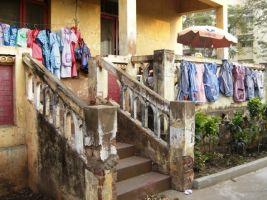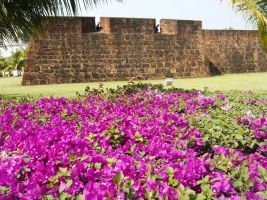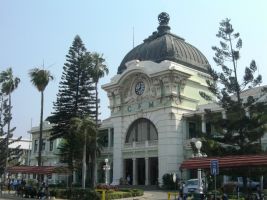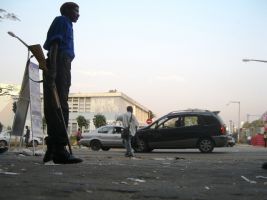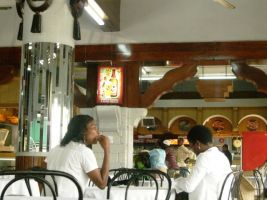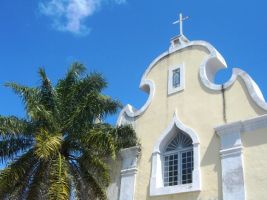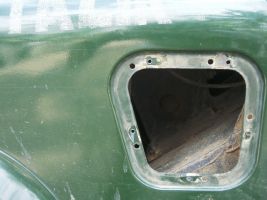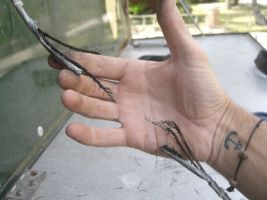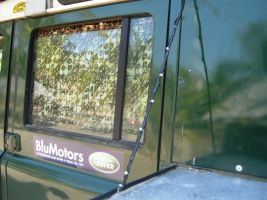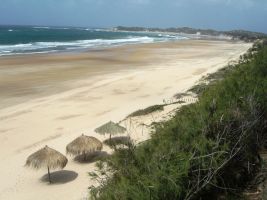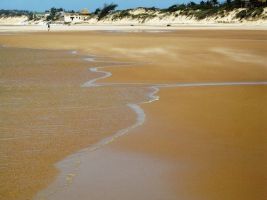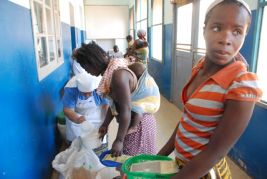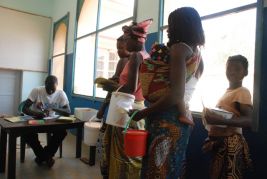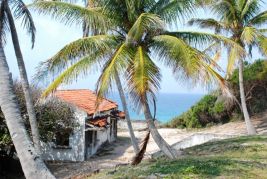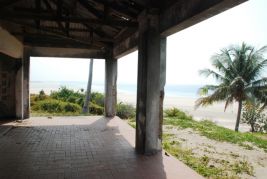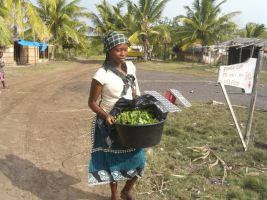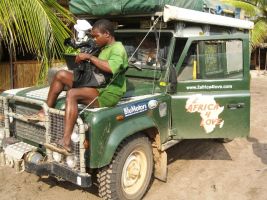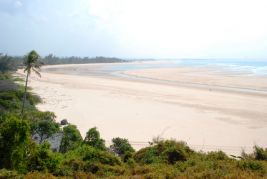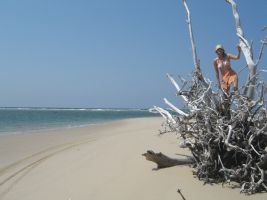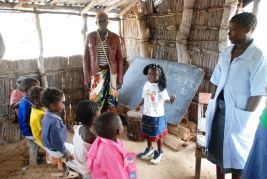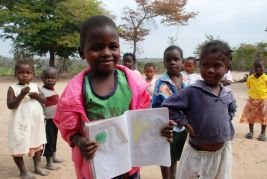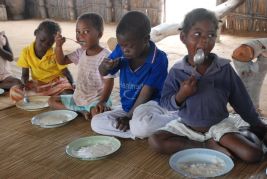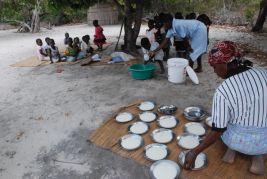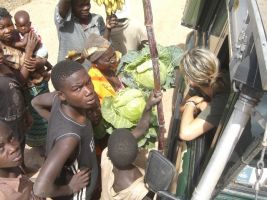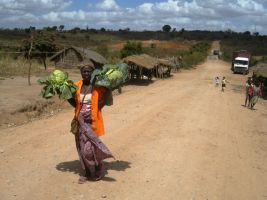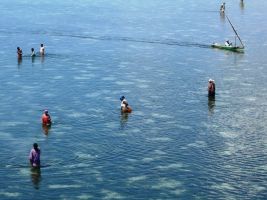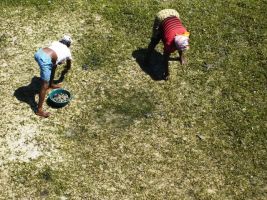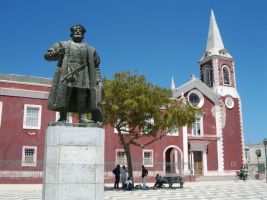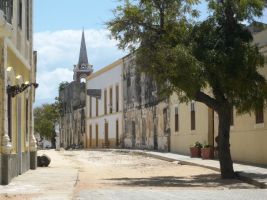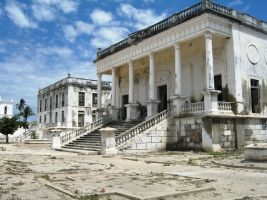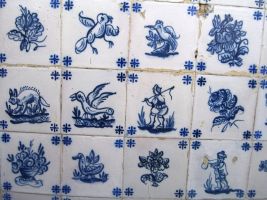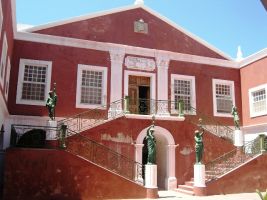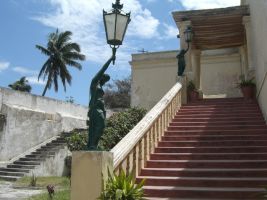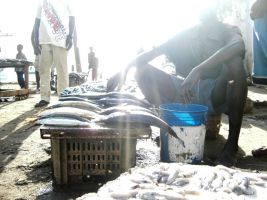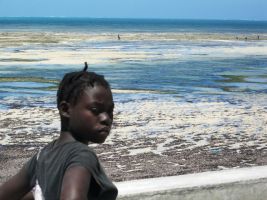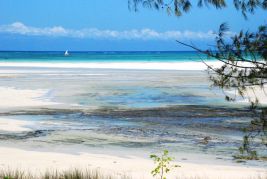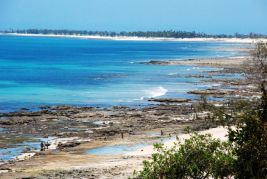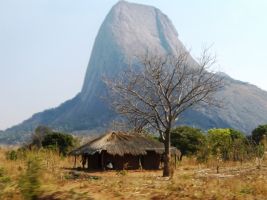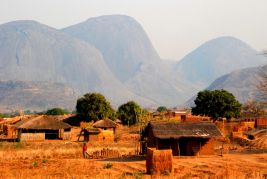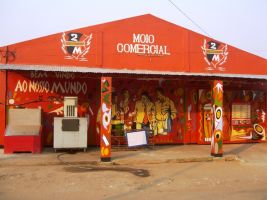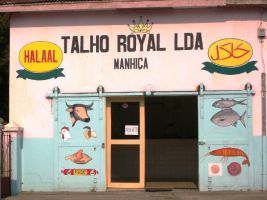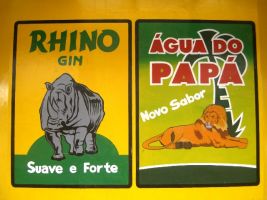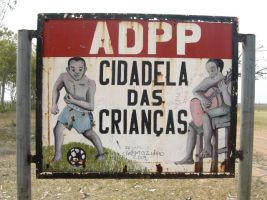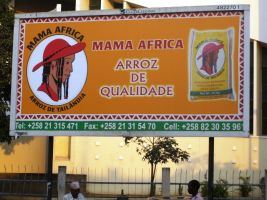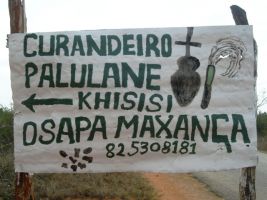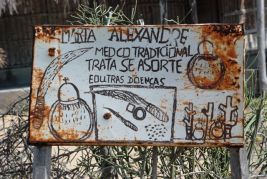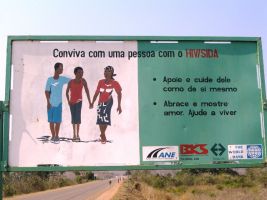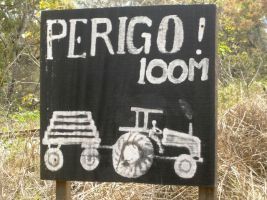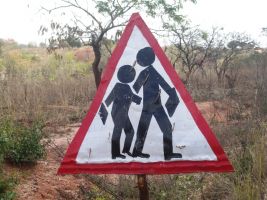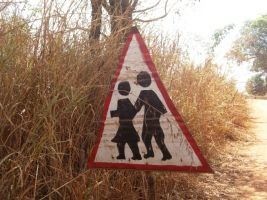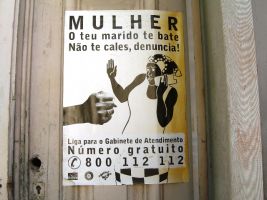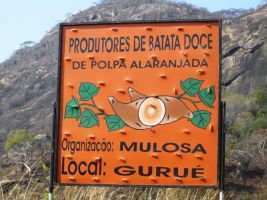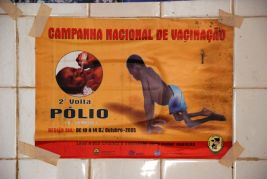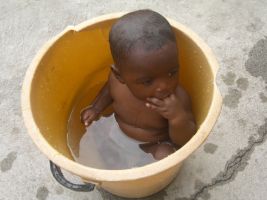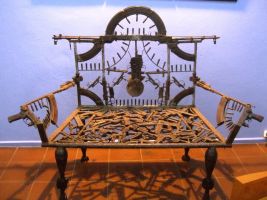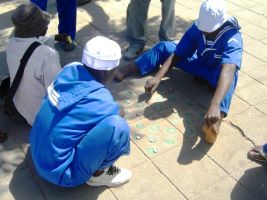
 Italia
Italia France
France Spain
Spain Morocco
Morocco Mauritania
Mauritania Senegal
Senegal Mali
Mali Burkina
Burkina Ghana
Ghana Togo
Togo Benin
Benin Nigeria
Nigeria Cameroon
Cameroon Gabon
Gabon Sao Tomè
Sao Tomè Gabon 2
Gabon 2 Congo
Congo Congo DCR
Congo DCR Angola
Angola Namibia
Namibia Sud Africa
Sud Africa Namibia 2
Namibia 2 Botswana
Botswana Zimbabwe
Zimbabwe Botswana 2
Botswana 2 Sud africa 2
Sud africa 2 Swaziland
Swaziland Mozambico
Mozambico Malawi
Malawi Tanzania
Tanzania Rwanda
Rwanda Uganda
Uganda Kenya
Kenya Etiopia
Etiopia Sudan
Sudan Egitto
Egitto Libia
Libia Tunisia
Tunisia Malta
Malta
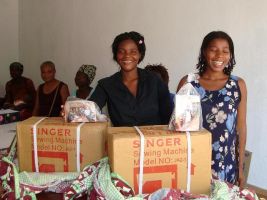
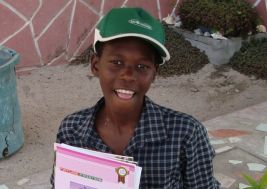
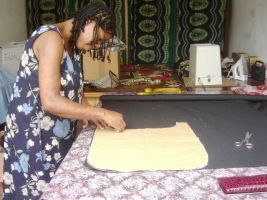
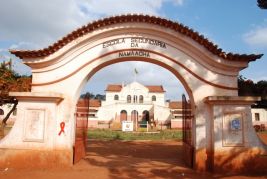
Here we are in Mozambique – 27 Aug 2008
Through the border is fast and trouble-free; the few formalities are carried-out professionally.
A stamp on our passport, the visa and 3 US dollars for the road tax.
You can pay in Rand, dollars, or Meticais.
They are not familiar with carnets but they are willing to learn how they are used, this avoids filling in their form and the fee.
At this border, there is an RC Insurance office and we decide (after five months without) to get a months cover.
Not knowing what the police check-ups are like, we think it’s best to pay the 12 dollars now.
Despite the fact that they speak Portuguese, driving is on the left hand side.
Good road, good weather
The Capital Maputo – 27 Aug 2008
The capital isn’t too chaotic, there are some old Portuguese buildings in ruin and some that have just been restored. There are huge dilapidated blocks of flats, hotels and shops; some are being restored. We see street vendors again, with fruit, veg., accessories and top-ups for phones. There are some souvenirs for tourists, especially around the more visited spots; the new imposing but insignificant cathedral beside the Town Hall, the walls of the Old Portuguese fortress and the beautiful train station that looks like it was built by one of Eiffel’s associates.
The “Latin” atmosphere is everywhere and it reminds me a little of Havana a few decades ago, maybe because of the old decadent colonial houses.
The old caffès dating back to the Portuguese period are very attractive, now without the precious furniture that used to furnish them, but still reminiscent of old European times.
The market is lively and buzzing; full of life, as is the rest of the city.
There are many currency exchange offices, mainly run by Indians. At the moment, for 1-euro you get 35.50 Meticais. The bank offers a slightly higher 35.55. Outside there are armed is guards. The Indians own most of the commercial activity here. There are also many pizzerias and Italian restaurants but are rarely run by Italians.
We camp in the only possible place, the Fatima backpacker. The central area is quite comfortable, with a beautiful atmosphere inside the courtyard; however, the toilets and the kitchen facilities aren’t too good, especially with the rather extortionate pricing here.
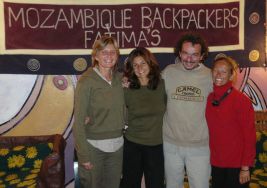
Great travellers, great meeting; Cri and Cla
The world really is a small place!
It is a great surprise to come across Cri, a dear friend from Modena. She is an avid traveller and a devoted salsa dancer; she is with Claudia who is also a dancer and “world traveller”. These two friends are just finishing a three weeks backpacking in Mozambique, tomorrow they will be taking a plane back to Bologna. They kindly offer to take back with them, some objects that we have acquired for the Elfo solidarity stalls. We celebrate with aubergine pasta, a bottle of red, and lots of lovely conversation.
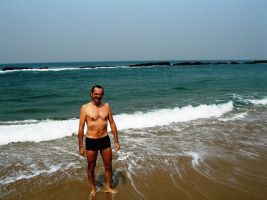
Xai Xai – 30 Aug 2008
The mosquitoes are back - despite it being the wrong season - and we find ourselves once again in a malarious area and will likely to be so until Ethiopia. Our journey north should be mainly on well-kept roads. The only places worth visiting now are the huge, almost deserted beaches. The first one we stop at is the Xai Xai where we decide to camp for the night. In fact, we spend the weekend here and we meet a lovely person called Veronica who comes from the Aosta valley! She is originally from Pont St. Martin and she has been working here for humanitarian organizations for some years now. She is now involved in nourishment projects for the ONU in Maputo.
This new friendship prompts us to take a pause before we leave, whereupon, we finally get a chance to take a dip in the almost warm waters of the Indian Ocean!
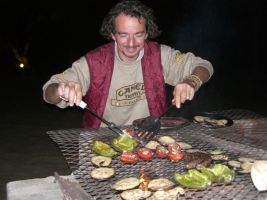
Braai – The last one?
We take a picture as this could be - as they say in South Africa and Namibia - our last “braai”, a barbeque.
In the upper parts of Africa, we probably won’t get a chance of another, as the pre-fabricated facilities are not as common and it is more difficult to find suitable meat.
Inhambane – 1 Sep 2008
This small, calm seaside town can be visited within a few hours. The atmosphere is pleasant. It was used by the Arabs before the arrival of the Portuguese as a trading port for oriental materials. It has been important throughout the colonial period for weaving and selling cotton. The ivory trade was also important, as sadly, was its involvment as a large centre for handling slaves. Since the end of this illegal trade, the city has been in a constant state of economic decline, and it hasn’t stopped falling.
In the mid-16th century, there was the first Jesuit mission of the region, which began the fusion of Indian, Christian and Muslim cultures that still render it unique today.
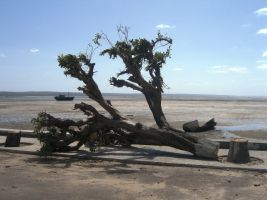
The bay is well protected but the powerful tides can often result in the local boats being grounded high and dry in the sand. These days the people are sadly and unexplainably busy cutting down age-old trees that are in the middle of the newly paved sidewalks, the only shady points and fresh spots along the sunny sea front.
K7 – repairs
We remove the protective grilles on the front wing vents and the cable supports from the aluminium folding worktop that have rotted, 10 months are beginning to show...
Once again, it’s time for some improvised repairs “African style”; chicken net for the vents and for the supports, steel brake-cable and electric insulating tape. Perfect!
Tofo and Barra – 2 Sep 2008
We reach some of the most beautiful beaches in Mozambique. Tofo has immense sandy beaches and very long tides. A shame that there is a strong wind, in September it is generally windy in this paradise and it ruins our party.
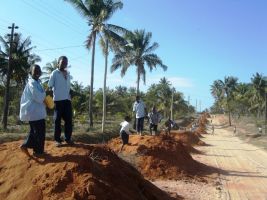
Barra is equally beautiful and is full of hospitable, high quality areas but is accessible only with a 4x4. There are only two campsites, quite expensive and unfortunately, they are not by coast. Many investors, especially from South Africa, are building everywhere. Luckily, the buildings are made of straw and wood, and they blend in well with the local architecture. The amount of road works is also an indication that things are changing. The children in the meantime play in the heaps of sand.
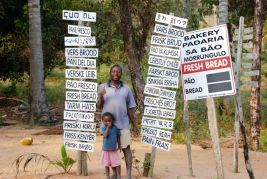
Morrongulo – 3 Sep 2008
Mozambique is mainly “beaches”.
Still heading north, we visit a deserted beach in Morrongulo.
We camp at the Silvia Shoal Camping situated by this terrific beach. Simple, clean and cheap.
GPS S23°13.221’ E35°29.233’.
We are back in the tropical strip.
Lost in the forest, along the track, we come across a friendly “multi-language” baker.
To whom will he sell his bread?
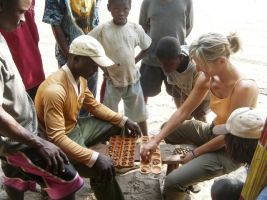
We stop by some artisans along the road.
They are also selling a seed game, a type of African draughts.
We want to compare these two versions of the African game par excellence - the one with two rows from the north of the equator (Awalè) and the one with four rows (Tswua).
We slip in a game…
St. Ana Mission
Out in the “mato” woods, there is a mission that distributes Papinha weekly - a kind of high-protein flour – to the poor people of the area; mums with undernourished children and HIV positive mums who queue for their weekly “ration”. They have to be able to demonstrate that their child is fed by taking them, along with their yellow medical cards, to the hospital where the child's weight is checked. This measure was introduced because some parents would eat the flour, or worse, they would sell it and the child would inevitably suffer.
Don Carlo and an elderly nun Michela run this scheme.
We leave an Elfo token for help (details in solidarity).
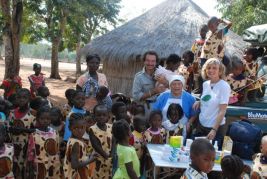
Medicine collected in Namibia delivery
At the same mission, we leave the medicines that the runners from the 100km Namib Desert race brought us in July.
They will be distributed freely to the sick of this area once a month; the mission dispenses the medicines to help those that need them. (Details in solidarity)
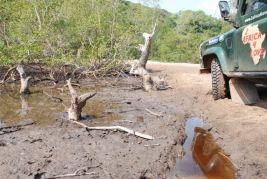
Tropic of Capricorn
We cross the Tropic of Capricorn heading north, entering the tropical band on the equator. The area where at least once a year, around midday, the sun is exactly at its zenith, right above our heads.
The shadow of a pole sticking vertically out of the ground just isn’t there.
It is the fourth time now that we have crossed this tropic. We left it coming out of Namibia heading north and then we re-entered a month later, then we crossed it again in Botswana heading towards South Africa and now here we are again, this time in Mozambique, the last time. When we leave the tropical band, we will be north of the equator, across the tropic of Cancer, heading towards the Arab countries.
Today we must cross 60km of sandy track through some swamps and quicksand to reach Pomene.
The only road, which must be crossed there and on the way back.
Old Hotel
Isolated from the world, 60km from the road, on a spectacular promontory, with an enormous white beach to the left and rock to the right. It is the huge abandoned complex of the Old Hotel. Until 1975, it was very busy and its bay was full of boats. It offered almost 100 jobs and many families made a living from the trade and from the supplies to the kitchens. Since the Portuguese owners, chased out by the regime abandoned it, it has been left to ruin and has been stripped bare. Many lost their livelihoods.
Now, the government has given permission for its use at a price of nearly 5 billion dollars, as it is now, in this state of ruin. The property will remain public for now; its position is unique, one of the most beautiful places in Mozambique. If anybody is interested…
Along the road, we give Safida and his friend Lorenzo a lift; they want to try to sell salad at the Lodge where we are heading.
Pomene – 5 Sep 2008
Between the sea and the river’s estuary lies this strip of very white virgin sand. The tides uncover the beach for hundreds of meters every day.
The beach turns from large to huge.
A unique place.
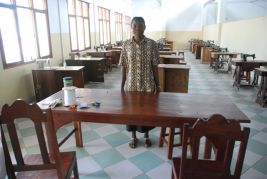
Inhassoro – 8 Sep 2008
We decide to leave this small place by the sea to visit the splendid island of S. Carolina.
The windy weather is not in our favour and so we decide to extend our visit to see a professional school “Stella Del Mare” built by Italians and run by Father Pio, Caterina and Vincenzo.
In this school, there are courses in woodwork, metalwork, needlework, science, along with information and technology. For those that come from afar, there is accommodation for both men and women.
They take care of a few dozen orphan children and have a nursery school for the locals.
For some years, in this area and around the country in some sixteen remote villages in the “Mato” there are other nurseries. The youths from the villages are trained to become teachers; a cook prepares meals for the children.
Time for school…
Time for food…
We leave an Elfo token as a support for the project (details in solidarity).
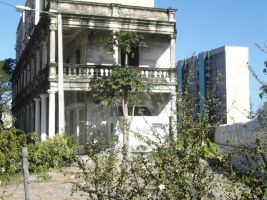
Beira – 10 Sep 2008
We reach the second largest city in Mozambique. A city devastated by flooding, and the negative impact it had on the local economy. Once it was very beautiful but now it lies completely in ruin.
The buildings built by the Portuguese and abandoned in 1975 have fallen into disrepair. Recently, a few houses have been restored with some new villas that have been built.
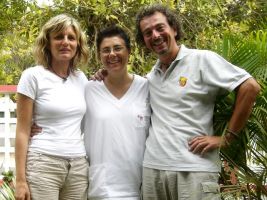
Marina – 11 Sep 2008
The real reason to come and see this city, was to meet our friend Marina.
A surgeon and doctor with over seven years of experience in Africa, we first met in Angola where she had been on a six year mission organizing and running the hospital in Chiulo.
She told us that she would be moved to the hospital in Beira, in August and we came to see if she was in fact already here.
After asking around the huge hospital and after some idling about, a bit of good fortune came our way and we found her.
A real surprise!
It is so wonderful to run into her so casually, whilst just crossing Africa.
A celebration was in order, straight away!
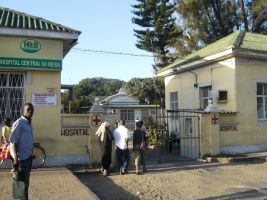
Marina is here on a project in connection with the appointment of young doctors in Mozambique. The number of doctors in the country is exiguous with little specialising. This favours the spreading of the “curandeiros”, (A curandero, a traditional folk healer or shaman) which is much more accessible to the majority of the population. We are talking about seven-hundred and fifty doctors in all of Mozambique compared with the “curers” who are in their many thousands.
In this big hospital of Beira, Marina and a few other Italian colleagues of the CUAMM (doctors of Africa) help the local personnel in study and practice. We have spent a few days with her; we have visited the hospital and come to know of its many difficulties; lack of pharmaceuticals, machines that don’t work and inadequately specialized personnel. A real job in the trenches…
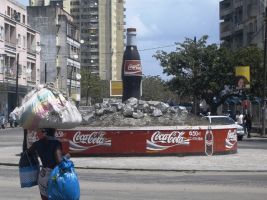
Well, look-a-here!
In this sunny country, this famous drink is certainly more pleasurable served cold in a glass.
YET
A Marxist-Leninist history (not so much history…!), with a revolution under its belt. Political independence from the Portuguese who are still in power.
Could they not have thought of anything else as a monument in the middle of a main square?
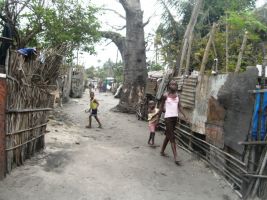
Bairro Nhamudima – 10 Sep 2008
Dominique, originally from Como, is a person with unbelievable positive energy! With the other nuns, she takes care of the poor, and in particular the women. AIDS is the main problem, followed by tuberculosis. We went with her to visit Bairro Nhamudima, one of the largest centres in Beira.
It is very difficult to describe what you experience.
A series of photographs could partially describe the situation but to respect the dignity of the people that we visited we did not use our camera.
We will show you only the “main path” entrance.
We decide to help one of the families we visited with an Elfo pre-adoption (details in solidarity)
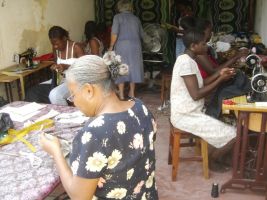
Sewing lab
One of the many initiatives is to set up a cutting and sewing lab that teaches women in difficulty working skills.
Some of them are HIV positive and without husbands; though, they all have children.
With an Elfo token, we buy a sewing machine for two of the workers. (Details in solidarity).
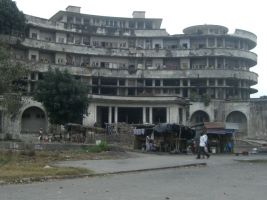
Grand Hotel
This used to be the most beautiful hotel in the city.
An enormous seaside building with a swimming pool and hundreds of rooms. After the expulsion of the Portuguese in 1975, it began to deteriorate. Since then, no one has maintained it; instead, just plundering and ransacking. It is now home to thousands of families (over 20,000 people!!!)
It is impossible for us to enter; far too dangerous, drains blocked for decades; there are heaps of rubbish and rubble, leaks and water infiltration. Families of ten or so all crammed into one room. The atmosphere is akin to John Carpenter’s “Escape from New York”.
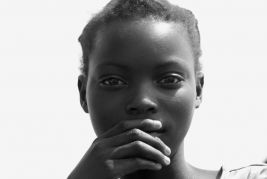
A terrible virus and friends
During our long trip, we have made new friends and we treasure more than ever our “friends at home”.
Some make their exit quietly, leaving behind emotional reminiscences.
Others reveal marvellous kindness.
Alberto from Parma, for example, already a dear sailing friend, has always been there, ready to lend a hand. He has been supportive throughout our journey, recently dedicating (whilst in Parma) two days of solid hard work, on-line to get rid of a virus we had on our computer; a pen-drive we used at an internet café was the culprit.
We were in risk of having to suspend the website.
Big thanks to him.
In addition, Marina welcomed us into her house like old friends, and like old friends, we left with all the affection of old friends; we owe her a huge hug.
To both of them we dedicate this wonderful glowing African glaze.
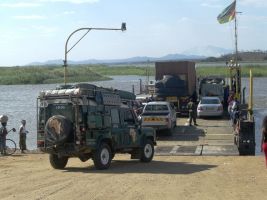
Zambezi River – 14 Sep 2008
Two days heading north - Track and road.
We cross the Zambezi we had left at Victoria Waterfalls in Zimbabwe.
In 1863, the famous explorer, David Livingstone sailed up this river. Livingstone's wife Mary died on 29 April 1863, a few km from here. She was buried 40km from this ford, near the sea.
The crossing here is made by barge or flatboat that is run by the military.
After an hour, we finally manage to cross.
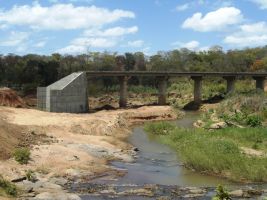
During the war, along these main routes, bridges where destroyed, now there is a slow reconstruction program going on. In the meantime, the road is winding with unpractical deviations amongst fields and baobab.
On the tracks, in the most remote places, a small break turns into an opportunity for the locals to sell some products and make some money
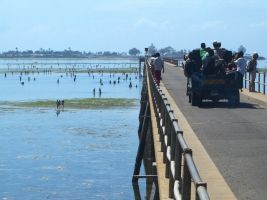
Ilha de Mozambique – 15 Sep 2008
What a place!
An Island, that is truly, very near to the coast. The sea is marvellous.
A bridge, built by the Portuguese in 1964 connects it to the mainland. With the low tide, you can see almost two km of seabed and in this low water women and children go and collect shellfish.
This island, positioned in its enchanting location, has been inhabited and frequented for centuries.
Its roads have seen Arab traders, Jesuits looking for indigenous populations to convert and Vasco de Gama during his first exploration. A naturally safe port, it was a dock for the slave ships that tore away Africans from their homeland to be sold as slaves. From 1500, the first Portuguese colonists lived in these sunny alleys until their expulsion in 1975. This place is bursting with history.
Getting around and living on the island must have been wonderful before the independence.
Nowadays everything is in ruin; the splendid houses have been ransacked or destroyed by thirty-years of dereliction. The roads are now just dust; the pavements once with the black and white stone mosaics are decrepit.
The parks and the gardens are unrecognizable, lost in a maze of bramble and dry brushwood.
The numbers of poor is growing uncontrollably. The population during the civil war, grew from four-thousand to fifteen-thousand. Mostly refugees running from the “Mato”, the woods where it was hell, they took shelter in this place, the war never reached.
Now there are two cities, the old stone colonial and the one of straw - the people living here, are mainly fishermen. However, there is an extraordinary beauty and charm of this island that remains and for many years, many foreigners have been buying houses and buildings to restore or rebuild. Many of them are South Africans, French and Italians, the new colonizers. The price of these houses (ruins) are growing rapidly. As well as apartments, there are new shops and restaurants that are opening. Many of them are humanitarian operators that work for the ONG who are investing there savings here. It is very difficult for some of those who arrive to get information on these houses and their availability; they like to keep this information classified.
Probably, within a few years, this island will completely change and will regain the glory it once had, offering work to many locals in many ways - waiters, cooks, gardeners, guards, fishermen and boatmen for trips to the beautiful surrounding smaller islands. It will lose its peace and simplicity, along with its honesty and the simple calm and passing of an African day.
Better or worse?
Chocas – 17 Sep 2008
To reach Chocas beach, it is off-road or from the sea.
Its extreme point is devastatingly beautiful.
Right now, the owner Lisa, is building a lodge on this point.
There are now eight areas for tenting, without water or any services.
Just a stunning view…
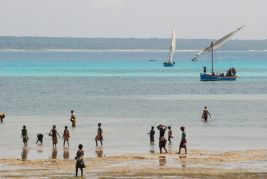
Nacala – 19 Sep 2008
On the north coast of Ilha, there is the huge bay of Nacala. An important natural port, it is rapidly evolving and the tourist installations are flourishing.
Whales visit this deep canal and we are lucky enough to see them spouting in the distance.
The “dhow” (small local sailing boat) used for fishing, are always moving along the crystalline waters with the tides and currents.
The shellfish seekers make the most of the long shallow tides for their dinners.
We take a swim amongst them, amongst their laughing and to our ears their incomprehensible language.
Around us are hundreds of coloured starfish.
Unfortunately, we have to leave this amazing place almost immediately.
It may seem strange on this journey, but we have missed enjoying the sea.
A few days of swimming and chilling…
The road ahead is still long, the November downpours in Kenya are coming and Malawi awaits us.
On track
Inland, it remains dry. We see some rock formations that look like Mordillo drew them.
They would be a mountaineer’s granite climbing paradise.
Houses, rich and poor, nearly all have an external porch.
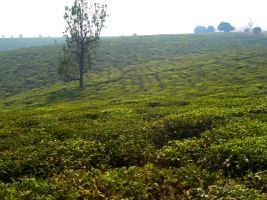
It has small pretty leaves…
In the surroundings of Gurue, the rainy climate and high altitude are all good factors for growing tea.
Many factories fell into ruin after that famous year of 1975; however, some have reopened.
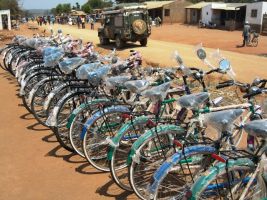
Bicycles
Bikes bikes bikes, so many bikes!
It seems to be the main means of transport for families. You will often see them loaded up with three sacks of flour and four chickens, or maybe a basket of goods, the wife in the meantime feeds the baby. The bikes are mostly Chinese, the best Indian ones cost about 60-70euro/pounds, the average monthly wage of a worker.
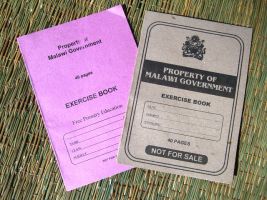
Market
Prices at the markets around the border are already in the Malawi currency, Kwacha. The exchange with the Metical is unbelievable.
There are poor quality goods, everything possible for bikes and… these books stolen from schools in Malawi. Obviously, some professor or head teacher has found a way of augmenting their wages.
We also see some solar panels for an interesting price.
Shame, that written on the back is “Ministry of Health of South Africa”. Probably stolen from a hospital.
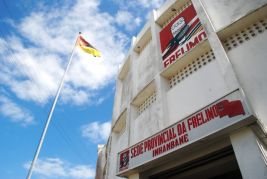
Frelimo or Renano – Blood History
It’s 1960. During a peace protest, the Portuguese police open fire on the crowd killing some people.
This is the start of the fight for independence. The clandestine movement for the liberation of Mozambique is born in 1962: FRELIMO. The founder is a Mozambican from the south that had studied overseas and worked for the ONU: Mondulane.
He is especially active in the north; helped by the government of Tanzania in 1964 the armed fight begins.
Only in 1975 will the battle have a positive outcome with the Portuguese driven out of the country.
The Marxist period begins for the country and the state seems to run well. However, it was only the economic apathy of the colonist gestation. In reality, judging by the situation both economically and politically, the country was heading for disaster.
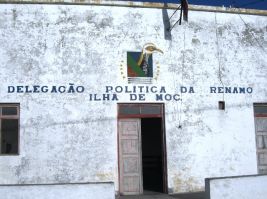
Discontentment spread through the people and, supported by the military sectors of South Africa and Zimbabwe, a destabilizing group is born, RENAMO.
They begin work with acts of terrorism. They destroy schools, hospitals, bridges and roads. Doctors, intellectuals and teachers are massacred.
The aim is to demolish the core of the state. This is 1983. It is all-out civil war. Thanks to the mediations of Italian missionaries, in 1992 an agreement of peace is signed in Rome. Renamo becomes a political party. In 1994, there are the first free elections in the whole history of the country.
Frelimo wins it. Renamo is the opposition.
Today the situation is the same. The present president of Frelimo and of the Gurbuza state will finish his warrant in 2009 and then it will be back to the ballot boxes. However, in these days, a statement by the Renano leader, Alphonso Dhlakama, has left everybody dumbfounded. He says that he is ready to go back to war. He is notorious for being mean and shortsighted, without any political capability to compare him with or to create a just opposition. In his party, Daviz Mbepo Simango, mayor of Beira, is loved by his people because of the good work he is doing for his citizens and for the city. He is greatly hampered by the ideas of his own party for fear of him becoming too powerful. He has decided to present himself independently at the elections.
2009 is just round the corner. We will just have to wait and see what happens from Italy.
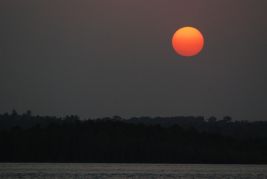
Our impressions
Without a doubt poor, with very dry and barren land, made up mainly of sand. A nation that gives little to its inhabitants. Underground resources are almost non-existent, gas is imported from South Africa and sold in gas bottles.
It has beautiful coasts with white beaches and coral barriers; tropical fish and whales are a delight for the subs and tourists. There are many ongoing investments along the coast, mainly from white South Africans and the ones cast out of Zimbabwe.
It is an expensive country, for example, petrol costs between 1.20 and 1.80 euro a litre depending where you are relative to the coast; the further away from the port, the more expensive.
Within the centre of the country, the main roads are in good condition. In the north they are notably worse, despite it being in Frelimo territory, they are not really developing.
The police are helpful towards tourists with little or no roadblocks. We were stopped at the city entrances just three times with our documents rarely checked, just a polite wishing a good holiday and an enjoyable stay. They have radars though, and they will fine you if you go over the speed limit just like in Europe.
The people are extremely kind and the vendors are not persistent and generally do not pester tourists.

